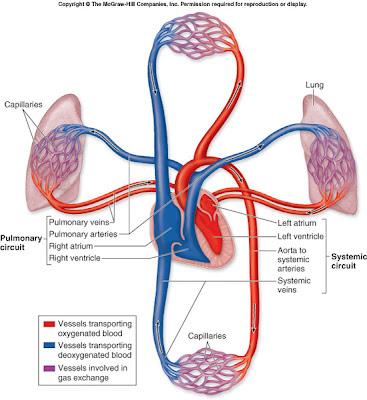
 Photo courtesy of Eurekalert
Photo courtesy of Eurekalert


 Photo courtesy of Eurekalert
Photo courtesy of Eurekalert
Philippine Tarsier (Tarsius syrichta) is a small mammal native to the Philippines. Either reddish-brown or gray-brown, depending on the part of the Philippines they live in. Known as the smallest primate, they are between 85 and 160 mm in length, their tail measuring 25 cm, and weigh between 80 and 165 g. Comparable to the hand of a small child in size. They have round faces, big ears that resemble bats and biggest eyes in mammals. Area around their eyes is typically darker than the rest of their body. Human contact traumatizes and stresses them, which drives them to continually beat their heads and eventually die. The Department of Environment and Natural Resources (DENR) and Philippine Tarsier Foundation, Inc. signed a Memorandum of Agreement on April 21, 1997 to protect tarsiers, create a forest reserve for them in Bohol, and run a wildlife research and laboratory to conduct studies about their ecology.
 Photo by Will Burrard-Lucas
Photo by Will Burrard-Lucas



Tarsiers are exposed to climate change and extreme weather events (i.e. typhoons) which causes habitat disturbance and destruction. They are exposed to threats such as fragmentation, predation, hunting, exposure to pollutants, and human disturbances. These natural hazards reduce the amount of suitable habitats and available food resources which threatens extinction to the species. They are endemic to the Southern Philippine islands of Bohol, Samar, Leyte and Mindanao which mainly consist of forests with dense vegetation which provide the tarsiers suitable shelter and abundant food resources such as insects and small vertebrates.
The IUCN (International Union for Conservation of Nature) considers Tarsiers to have a conservation status of “Near Threatened”, the population is decreasing mainly because of human disturbances such as residential & commercial development and agriculture & aquaculture which leads to the destruction of their habitat.
 Photo by Chien C. Lee
Photo by Chien C. Lee
Philippine tarsiers reproduce sexually and are monogamous creatures, meaning that a male tarsier will exclusively mate with one female tarsier during any time of the year. They carry 1 infant with a 6-month gestation period (period of time between conception and birth). They usually wean (get used to feeding to other food that isn’t their mother’s milk) after ~45 days. They mature between 1-2 years and have an average lifespan of ~13 years but can go up to 20 years.
They are gonochoric, (reproduce with a male and a female and each organism is either male or female), iteroparous (can experience multiple reproductive events throughout their lives), viviparous (develop their offspring inside their body), and precocial (their young are born able to feed or move independently).

Illustration of Horst Spielmann

 Photo courtesy of VICE
Photo courtesy of VICE


Tarsiers are carnivores, specifically, insectivores which primarily eat insects; they also eat lizards, small vertebrates, and small birds. They have a simple digestive system, which supports their mostly insect-diet and lacks a cecum for tough plants, but is optimized for rapid digestion of their food. They require a high protein, energy, and nutrient diet to support their active lifestyle. They eat ~10-14g of food daily, or about 10% of their weight.
Photo courtesy of Treehugger Illustration of IAN D. HUME

In mammals, when air enters the body through the nasal cavity in animals, pulmonary ventilation takes place through inhalation. Nasal cavity allows for the passage of warm, body-temperature, and humidified air. Mucus with a high water content coats the respiratory tract to protect the tissues from air contact. Water is carried by the air as it passes over the mucous membrane surfaces to balance the air to the body, lessening the harm that dry, cold air can do. Nasal passageways also eliminate airborne particles. The procedures serve as safeguards against harm to the lungs and trachea.
 Photo courtesy of Critter Science
Photo courtesy of Critter Science

Tarsiers have a four-chambered heart and a closed circulatory system, the tarsier heart is likely significantly smaller than humans’. Adult male tarsiers may have a slight increase in heart rate to aid in activities or adaptations requiring faster oxygen delivery.
In comparison to males and captive-bred tarsiers, females and wild-caught individuals had greater echo mean values (a denser heart muscle, which would enable more powerful contraction and effective blood pumping). Pregnancy and lactation, which need for higher oxygen and nutrition supply, may benefit from this. It also reflects environmental adaptation that enables females to sustain adequate circulation during stressful or exertional times.

 Illustration of ZAINAL HAJI AHMAD
Illustration of ZAINAL HAJI AHMAD



Mammals have evolved to regulate osmotic pressure and concentrations of specific electrolytes in three major fluid compartments (blood, interstitial fluid, and intracellular fluid).
Osmotic pressure will have a direct effect on blood pressure due to blood plasma being a fluid component. The kidneys are the main osmoregulatory organ of mammals which filter blood and maintain ion concentrations of bodily fluids.
Photo courtesy of IMGIX Illustration of BYJU’S